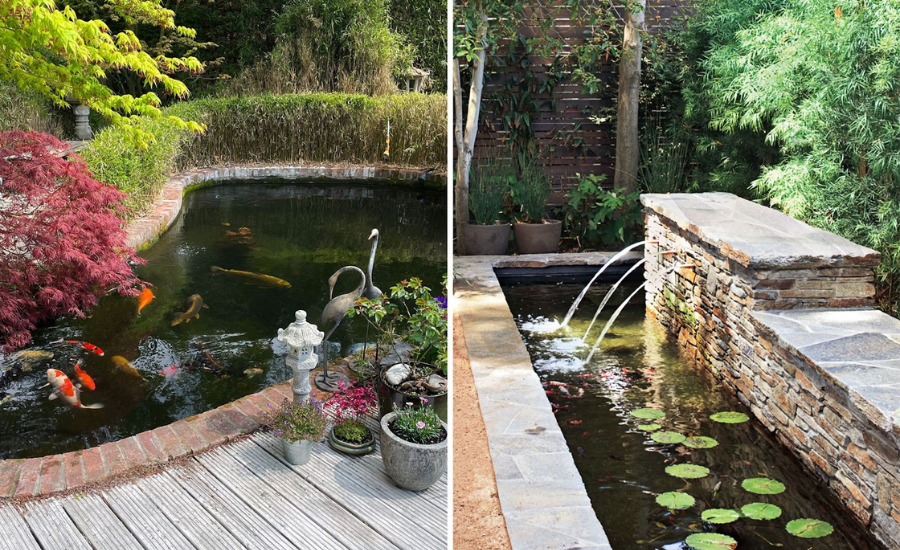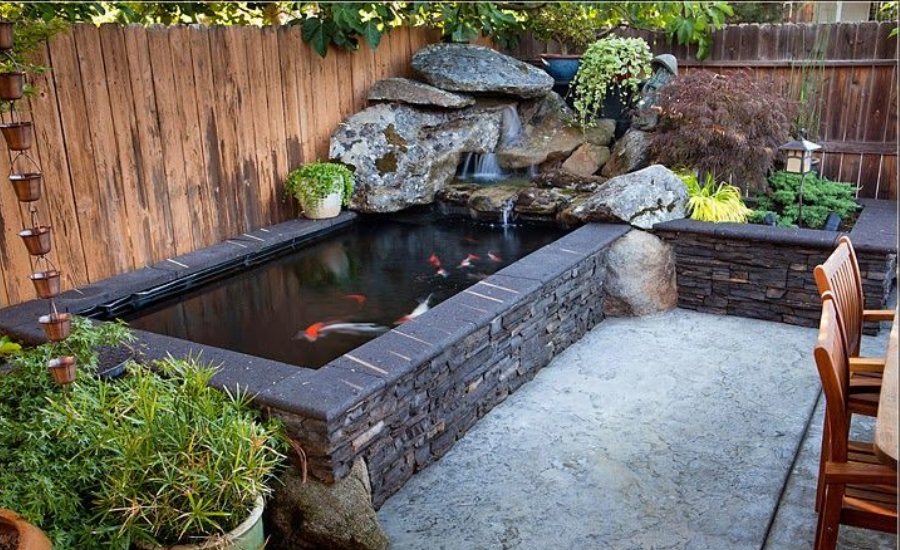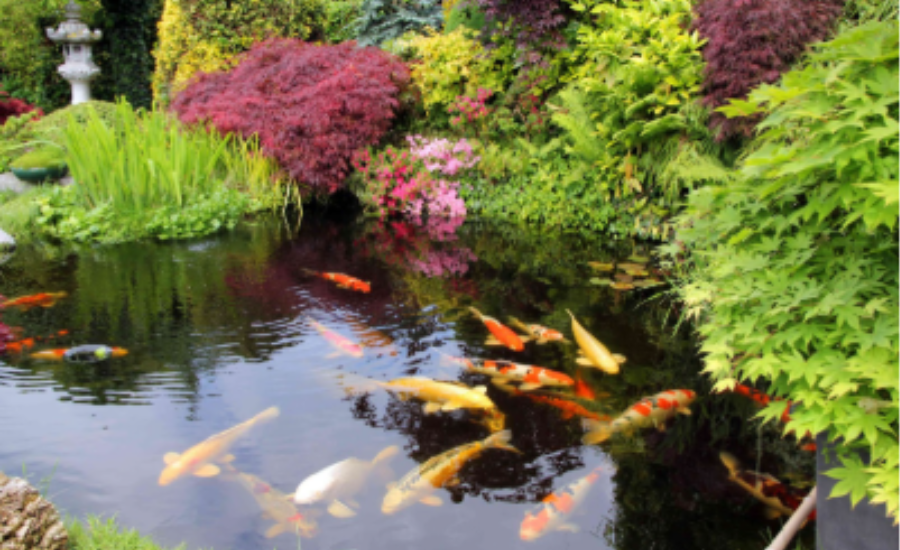What Are the Top Mistakes to Avoid When Building a Koi Pond?
Building a koi pond isn’t just about adding an aesthetic feature to your garden—it’s about creating a peaceful sanctuary that brings joy to both you and the koi that will call it home. The sight of koi fish swimming gracefully through the water can have a calming effect, helping reduce stress and promoting a sense of tranquility. If you’re a beginner, creating a koi pond might feel overwhelming at first, but don’t worry! With the right guidance and a little patience, your first pond will not only be a beautiful addition to your home but also a sustainable, thriving environment for your fish.
Planning Your Koi Pond: Setting the Foundation for Success
Defining Your Vision
Before you grab the shovel, it’s important to have a clear vision for your pond. Think about how large you want it to be, what kind of fish you’ll have, and what other elements you’d like to incorporate. Are you aiming for a small, tranquil pond that blends into the landscape, or do you envision a grand koi pond that serves as the centerpiece of your garden? This vision will guide every decision you make throughout the koi pond building process.
- Consider Your Space:
The size and shape of your pond should complement your existing landscape. Are there any areas that naturally lend themselves to a pond? Ensure it blends seamlessly with your backyard and enhances the overall look and feel. - Fish Types:
Koi are hardy and beautiful fish, but they need space to thrive. Factor in their potential size and the number of fish you want to keep. The more fish you plan on, the larger the pond should be.
Seek Advice from Experts
Building a koi pond can be a learning curve, especially if you’re new to the hobby. Don’t hesitate to reach out to more experienced koi pond builders. Online forums, local koi clubs, and even your local pet or pond store are excellent resources. You’ll be surprised at how willing others are to share their tips, tricks, and lessons learned. Their advice could help you avoid common mistakes, saving you both time and money in the long run.
Choosing the Right Location: Location Is Key

Proximity to Your Home
A koi pond should be visible and accessible from your home. It’s not only about aesthetics; you’ll need to be able to monitor the pond’s health and perform maintenance tasks with ease. Choose a spot that allows you to enjoy the pond from a comfortable distance while maintaining good visibility.
- Consider the View:
Place the pond where it can be viewed from your living room or backyard seating area. You’ll be spending a lot of time around the pond, so it’s essential that it’s in a location that’s easy to observe and maintain.
Managing Environmental Factors
When choosing a location, think about factors like sunlight, shade, and nearby trees. These can all impact your pond’s water quality and the overall health of your koi.
- Avoid Direct Sunlight:
Too much direct sunlight can cause the water temperature to rise, which could stress your koi and promote algae growth. Ideally, your pond should be located in partial shade to keep the water temperature stable. - Be Mindful of Leafy Trees:
While trees can provide shade, the leaves they shed can clog filters and degrade water quality. It’s best to avoid placing your pond under large trees or install covers to reduce the number of falling leaves.
Designing Your Koi Pond: Make It Functional and Beautiful
Planning the Layout: Get It Right From the Start
When it comes to koi pond building, one of the most important steps is to plan out your layout. This will save you time and effort later. Use stakes and string to outline the pond’s shape and size on the ground. Stand back and observe the space for a few days to ensure the layout works with your existing garden design.
- Refining the Shape:
The shape of your pond can affect both aesthetics and functionality. Oval or circular ponds tend to be easier to maintain, while irregular shapes might look more natural. Consider the overall feel you want to achieve in your backyard.
Depth and Dimensions: Go Deep for Healthy Koi
Koi are relatively large fish that need plenty of room to swim and grow. A minimum depth of 4 feet is crucial for a healthy koi pond, as it provides space for your koi to swim freely while helping to regulate water temperature. Depth also discourages terrestrial predators, such as raccoons, from accessing your pond.
- Why Depth Matters:
Deeper ponds are more stable and less likely to experience sudden temperature fluctuations. They also provide your koi with a secure space to retreat if they feel threatened.
Constructing the Pond: Building Your Dream Pond
Preparing the Base: A Strong Foundation
Before you lay down the liner, you need to prepare the pond base. The ground should be free from sharp objects, which could puncture the liner. To protect it, consider adding a layer of old carpet, carpet padding, or sand to cushion the bottom.
- Extra Protection:
This step is crucial to avoid unexpected damages to the liner that could lead to leaks.
Choosing the Right Liner: Durability Is Key
A good pond liner is essential for keeping your koi pond intact. EPDM rubber is a high-quality material known for its durability and flexibility. Although it’s more expensive than some alternatives, the long-lasting warranty it offers makes it a worthwhile investment for koi pond building.
- Overhang for Security:
Make sure the liner extends beyond the edge of the pond, creating an overhang. This helps keep the water in place and prevents dirt from spilling in.
Installing the Filtration System: Keeping Water Clean and Clear
The Heart of Your Pond
The filtration system is the backbone of any koi pond. Without it, your pond could quickly become murky, and your koi could become unhealthy. Choose a filtration system that is appropriate for the size and water volume of your pond.
- Why Proper Filtration Matters:
Koi produce a lot of waste, and a good filtration system ensures that the water remains clean and oxygenated. Proper filtration also helps to maintain a balanced ecosystem, ensuring that your koi thrive.
Adding the Finishing Touches: Enhancing the Beauty and Functionality

Rocks, Plants, and Barriers
Once your pond structure is in place, it’s time to add rocks, plants, and any barriers you need for protection. Adding decorative rocks can help stabilize the edges of the pond and make it look more natural. Aquatic plants not only enhance the beauty of your pond but also help filter the water and provide shade for the koi.
- Creating a Safe Haven for Koi:
Consider installing mesh koi houses or adding barriers to protect your koi from predators. These will give your koi a place to hide when necessary, ensuring their safety.
Stocking Your Pond: Introducing Your Koi
Once the pond is filled and treated, it’s time to add your koi. Gradually acclimate them to the pond’s water temperature and conditions. Over time, your koi will start to grow and become a beautiful addition to your outdoor space.
- Water Treatment:
Always treat the water before introducing your koi to ensure it’s free from harmful chemicals like chlorine.
Long-Term Maintenance Tips: Keeping Your Koi Pond Healthy
Regular Cleaning and Inspections
Even with a good filtration system, your koi pond will need regular maintenance. Clean out debris, check the filters, and ensure that everything is running smoothly. Regular inspections will help you catch any issues early and keep your pond in top shape.
- Winter and Summer Care:
Be prepared to make seasonal adjustments to ensure your koi pond stays healthy all year long. Add a pond heater in winter to prevent freezing, and monitor the water temperature during the summer months to avoid stressing your koi.
Conclusion: Enjoying Your Koi Pond for Years to Come
Koi pond building is an exciting and rewarding project. By following these steps, from planning and constructing to adding finishing touches and regular maintenance, you’ll create a stunning and sustainable pond. With a little care, your koi pond will thrive for years to come, offering you endless beauty and peace.
FAQs
1. How deep should a koi pond be?
A koi pond should be at least 4 feet deep to ensure your koi fish have enough space and protection from predators.
2. Can I use tap water in my koi pond?
Tap water can be used, but it’s crucial to treat it to remove harmful chemicals like chlorine.
3. What plants are best for koi ponds?
Aquatic plants like water lilies, lotus, and water hyacinth are ideal for koi ponds, as they help with filtration and provide shade.
4. How do I protect my koi from predators?
You can protect your koi by adding mesh koi houses, installing barriers, and choosing a pond design that makes it difficult for predators to access the water.
5. What is the ideal number of koi for a pond?
The number of koi depends on the size of your pond. A good rule of thumb is one koi per 100 gallons of water.
Stay informed and up-to-date by staying in touch with us regularly: Misty Info!

